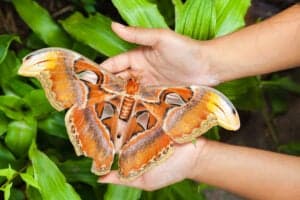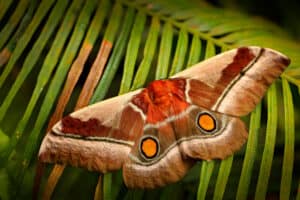Are you curious about the types of moths that call the state of Pennsylvania home? You’re not the only one. Although there are over 160,000 recognized species of moths globally, only roughly 350 species are native to this state. However, there is a wide variety among those who reside within Pennsylvania, with some bright, some dull, some big, and others small! Let’s explore 10 common moths found all across the state of Pennsylvania.
1. Sphinx Moth
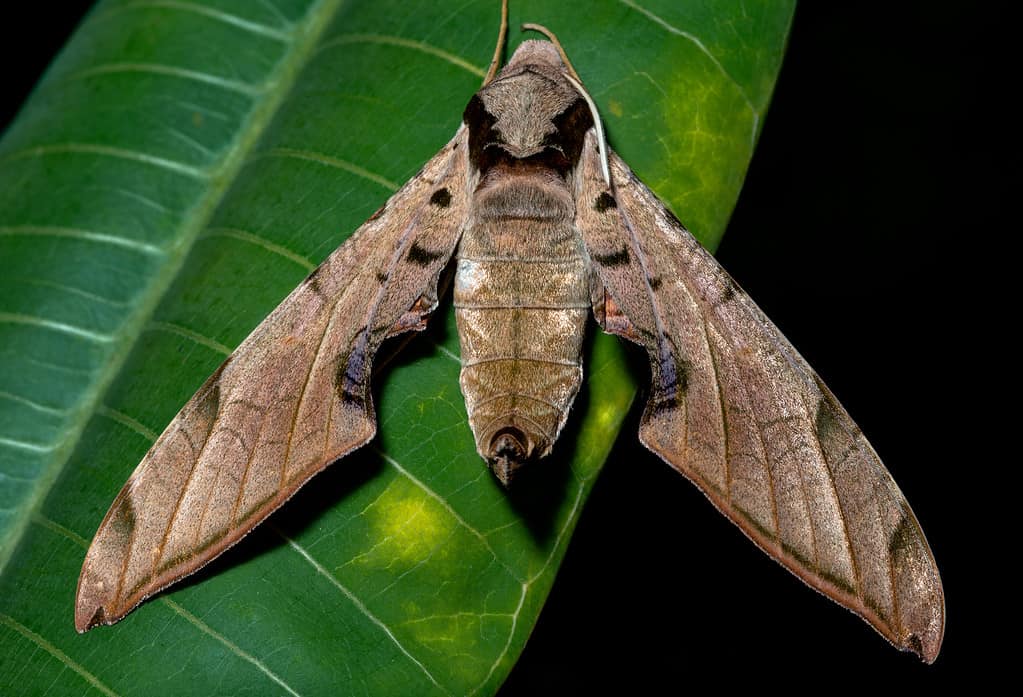
Sphinx moths are also sometimes called hawk moths.
©iStock.com/Daynjer-In-Focus
The term “sphinx moth” is a blanket term for a variety of different moths that fall into this category. In fact, sphinx moths are the largest group of moths native to Pennsylvania. Some of the members of this group are the Pandora Sphinx, Hydrangea Sphinx, Azalea Sphinx, and the Lettered Sphinx. These moths are nocturnal, so it may be rarer to see them during the daytime. However, at night time, it’s easy to find them flitting around porch lights or other artificial sources of light.
2. Spongy Moth

Spongy moths have a life cycle that lasts approximately one year.
©iStock.com/Wirestock
The spongy moth is an invasive species and a common pest insect. Formerly known as the gypsy moth, this creature is responsible for destroying a variety of trees native to Pennsylvania. The spongy moth is rampant throughout the whole state, and its caterpillars can be found nearly everywhere. Their numbers are most dense towards the center of Pennsylvania, and homeowners are cautioned of their return each spring. It is recommended to dispatch these caterpillars as quickly as possible to prevent damage to wildlife.
3. Cecropia Moth
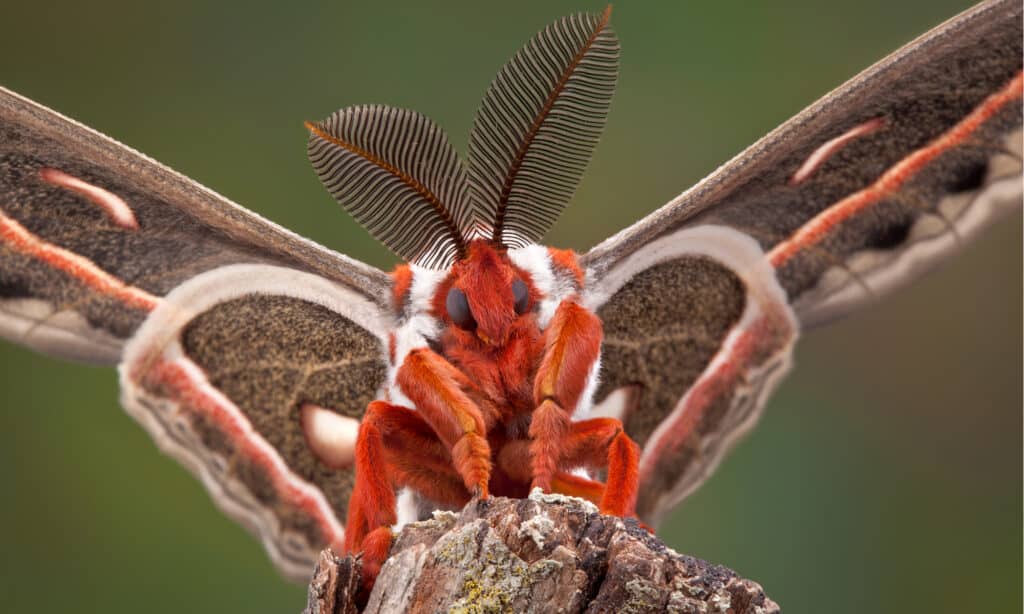
The wingspan of a cecropia moth can reach between five and seven inches.
©Cathy Keifer/Shutterstock.com
The cecropia moth is the largest moth species native to North America. Their plump bodies and large wingspan might make them look intimidating, but don’t let their incredible size scare you. These moths are docile and relaxed, preferring to live their lives far away from human populations. That being said, cecropia moths are nocturnal, so seeing one in person can be a rare occurrence. If you’re lucky enough to see one of these gorgeous silk moths up close, be sure to snap a picture to commemorate the occasion.
4. Rosy Maple Moth
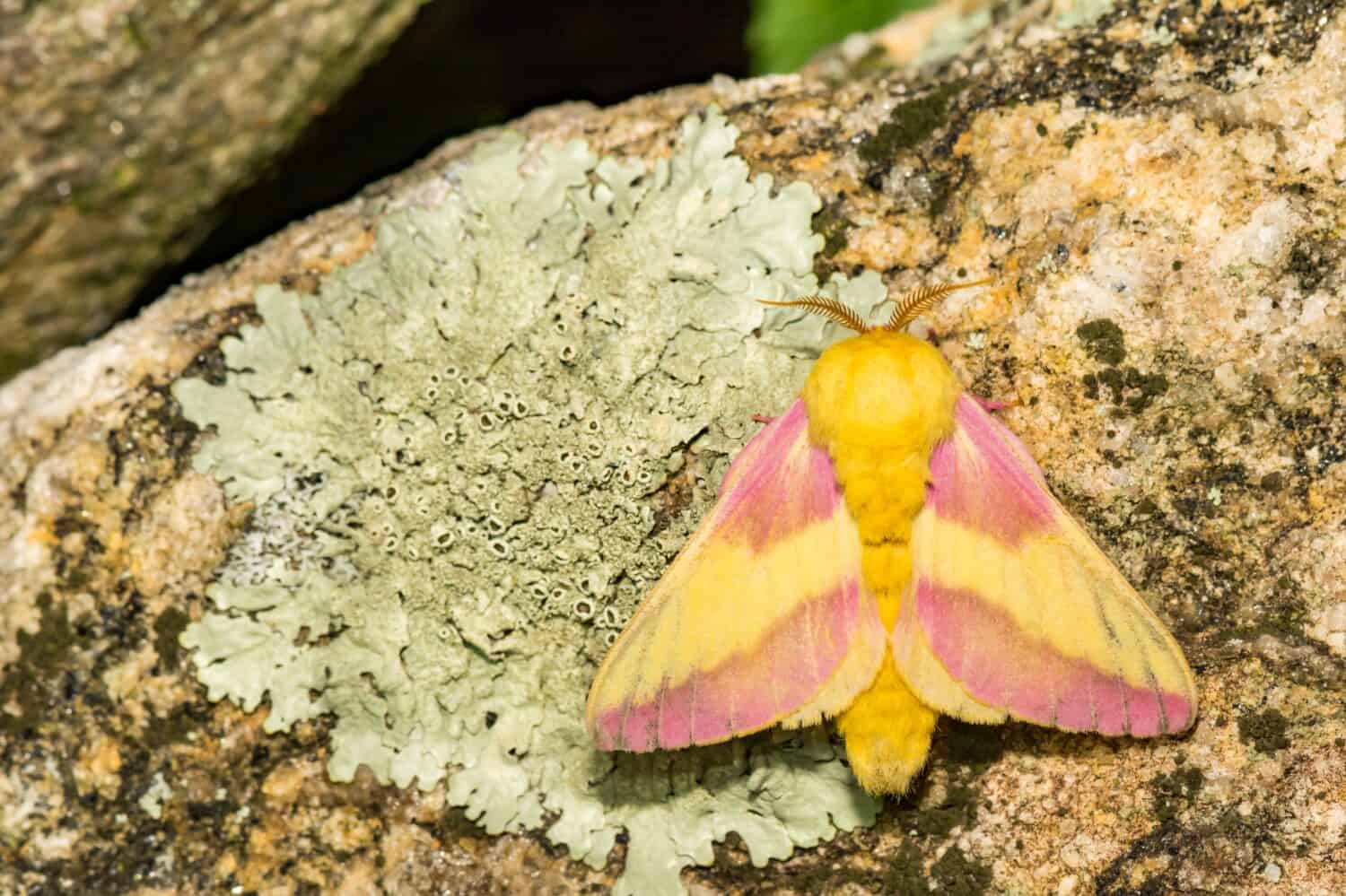
Male rosy maple moths are slightly smaller than their female counterparts.
©Jay Ondreicka/Shutterstock.com
This beautiful pink and yellow moth might look like someone’s cute Photoshop creation, but it’s entirely real. Despite what you may think, the rosy maple moth is quite common throughout the state of Pennsylvania. This nocturnal moth is abundant all throughout the state and emerges each year in late May. This moth gets its name from its primary food source, maple trees. The rosy maple moth isn’t considered a pest insect by any means, however, due to their abundance, they may be irritating for those who care for maple trees.
5. Luna Moth
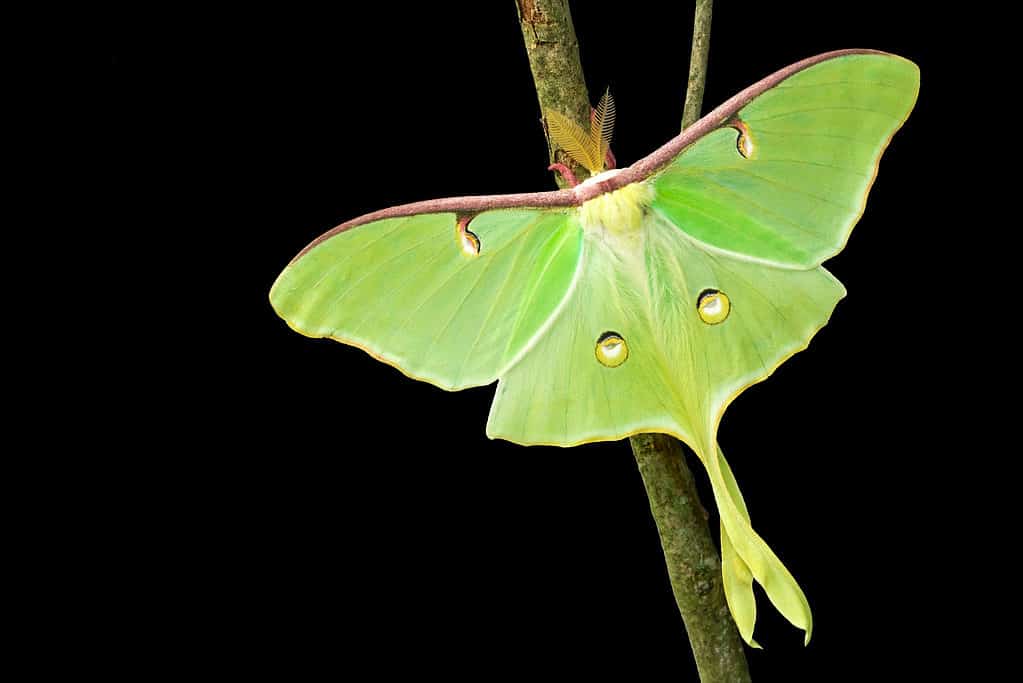
The luna moth was named after the “moon-like” spots on their hindwings.
©JasonYoder/Shutterstock.com
Luna moths are likely the most beloved species of moth of all time. Their radiant beauty is almost comparable to that of the moon itself! These elegant moths begin emerging from their cocoons in late May and early June. Some of you may know that adult luna moths are born without mouths because mating is their main priority after they reach maturity. Due to this, they have no digestive system and only live to be around a week or so old. Their ephemeral nature makes seeing this moth quite a big event, and those who have a chance to see one in person are said to be blessed with good luck in the future.
6. Imperial Moth
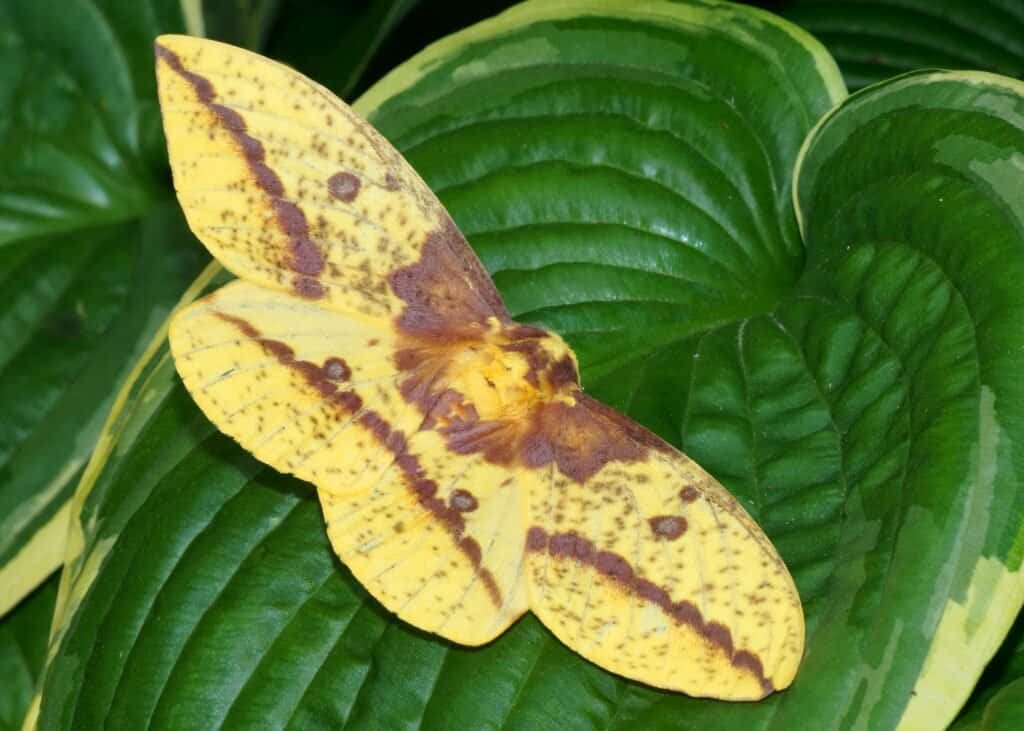
The
imperial moth
is common in many regions of the United States, spanning the entire East Coast.
©Matt Jeppson/Shutterstock.com
Commonly found all throughout the East Coast of the United States, the imperial moth comes in a variety of yellow and brown tones based on its gender. Female moths will be slightly more yellow, whereas males will appear browner in color. The imperial moth was once one of the most abundant moth species in the state of Pennsylvania, but artificial light sources and human intervention have hurt their populations in recent years. Despite this, they are resilient and still a relatively common sight.
7. Io Moth
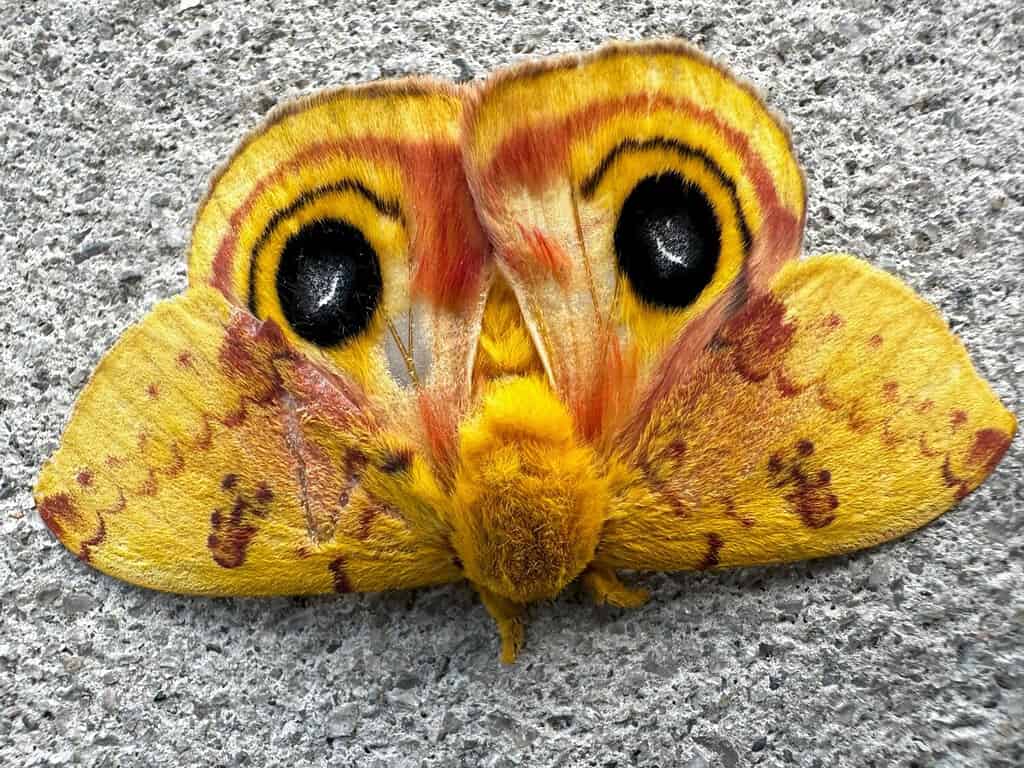
The name “Io” is derived from Greek mythology.
©Linardo_respado/Shutterstock.com
Equally beautiful and intriguing, the Io moth is likely best known for the iconic eyespots on its wings. These markings on their hind wings are not just for show, in fact, they play an important role in deterring predators. Eyespots are a type of mimicry that convince potential attackers that they’re looking into the eyes of a much larger animal. In that way, the Io moth protects itself from many threats without having to do any fighting. The Io moth caterpillar has a particularly painful sting, so you’ll want to steer clear of any that you see crawling around Pennsylvania.
8. Polyphemus Moth
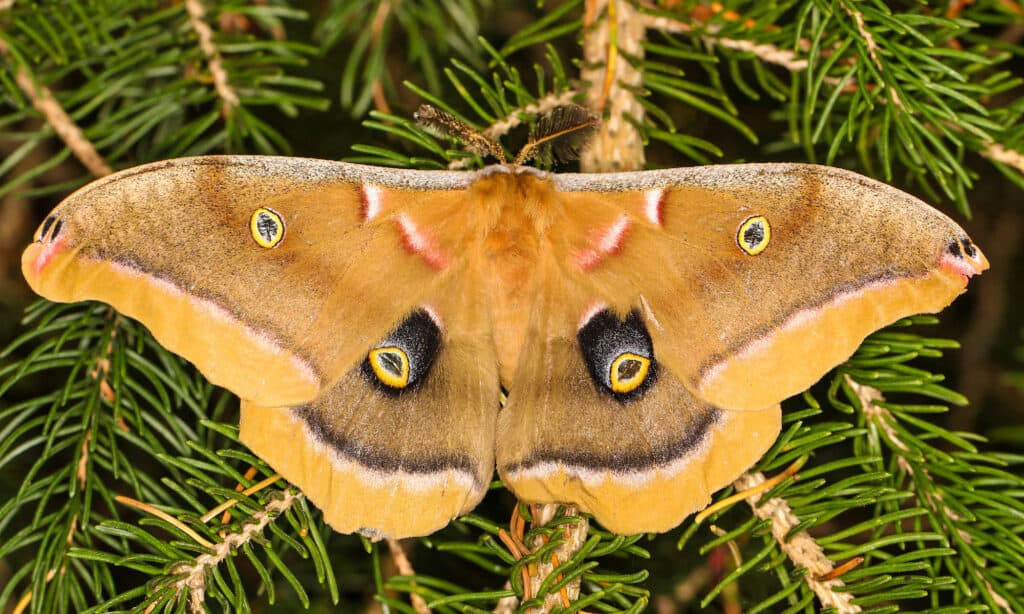
The average wingspan of a
Polyphemus moth
is roughly 15 centimeters.
©iStock.com/BrianLasenby
The Polyphemus moth is another entry on this list that boasts two mesmerizing eyespots, in fact, these two eyespots inspired its name. There is a gigantic cyclops named Polyphemus famous in Greek mythology who has one big eye at the center of his face. Much like him, the Polyphemus moth has one giant eyespot at the center of each of its hind wings. Similarly to the Io moth, these eyespots are used as a form of self-defense. These moths are found in both urban and forested areas, so spotting one should be relatively easy. Be on the lookout for two big eyes staring back at you!
9. Hummingbird Clearwing
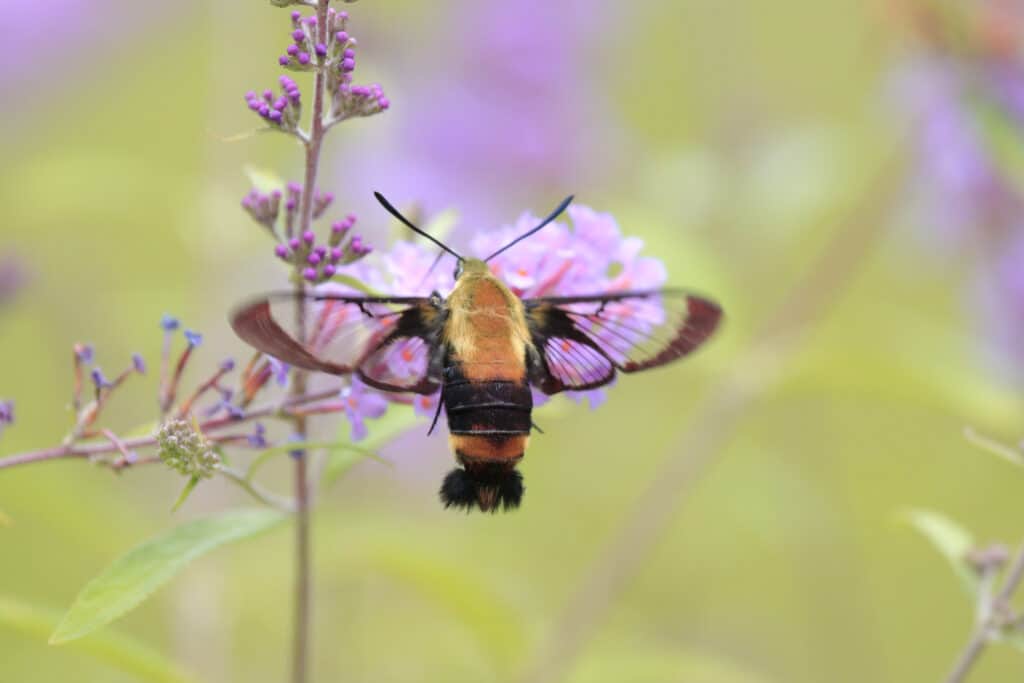
The
hummingbird
clearwing can beat its wings at an incredible rate of 70 beats per second.
©Walter Coate/Shutterstock.com
At first glance, it’s easy to mistake this moth for an actual hummingbird. The hummingbird clearwing is actually a hawk moth mimicking a hummingbird, and it’s hard to deny how excellent they are at this. It’s common to see these moths hovering over flowers with their proboscis extended inside, mimicking not only the looks but also the behavior of the hummingbird. Some people might think hummingbird clearwings are rare, but that is not the case. More often, it’s that we’re not looking for them, or they’re mistaken for actual birds. Regardless, this moth is native to Pennsylvania and relatively common all throughout the state.
10. Borer Moth
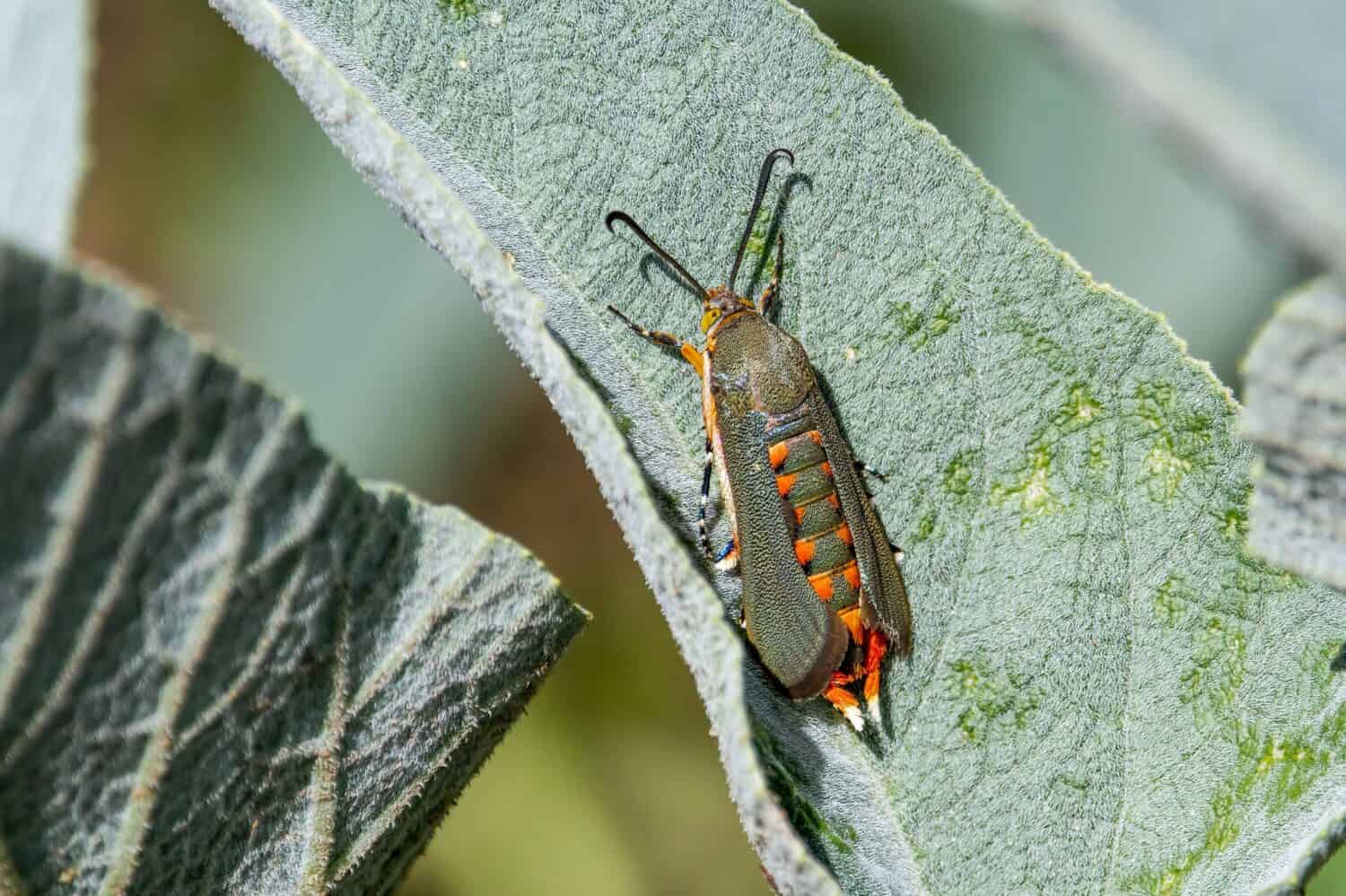
Borer moths are most active during the summer months.
©Wirestock Creators/Shutterstock.com
Some species of borer moths are diurnal, meaning they’re active during the daytime hours. Due to this, you may see them more often than some other entries on this list. Much like the spongy moth, borer moths are widely regarded as pests who destroy forests. According to the Pennsylvania Department of Conservation and Natural Resources, these two moths are on a short list of insects that have “caused the most damage in terms of defoliation and mortality during recent years.” Because of this, it is recommended to take immediate action and exterminate them quickly if you spot them in your garden or yard.
Final Thoughts
Beyond the 10 we’ve listed here, there are many more moths who call the state of Pennsylvania their home, so there are still plenty to discover. If you’re interested in educating yourself, you can consult Insect Identification. Being able to tell the difference between helpful moths and invasive pest moths is very important in the state of Pennsylvania. Currently, certain species are threatening the health of local forests, so try to do your part and quickly dispatch those who damage important trees.
The photo featured at the top of this post is © Jim and Lynne Weber/Shutterstock.com
Thank you for reading! Have some feedback for us? Contact the AZ Animals editorial team.





